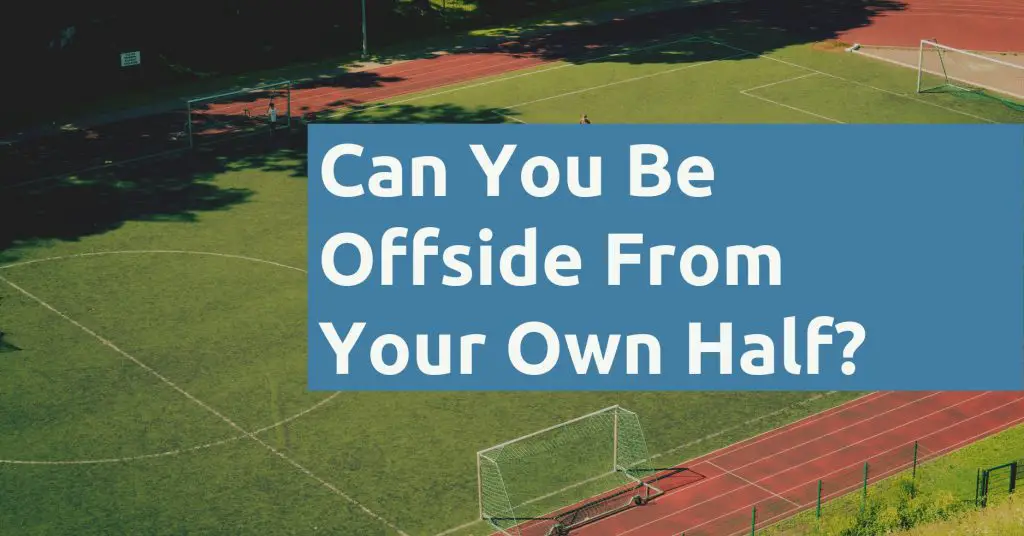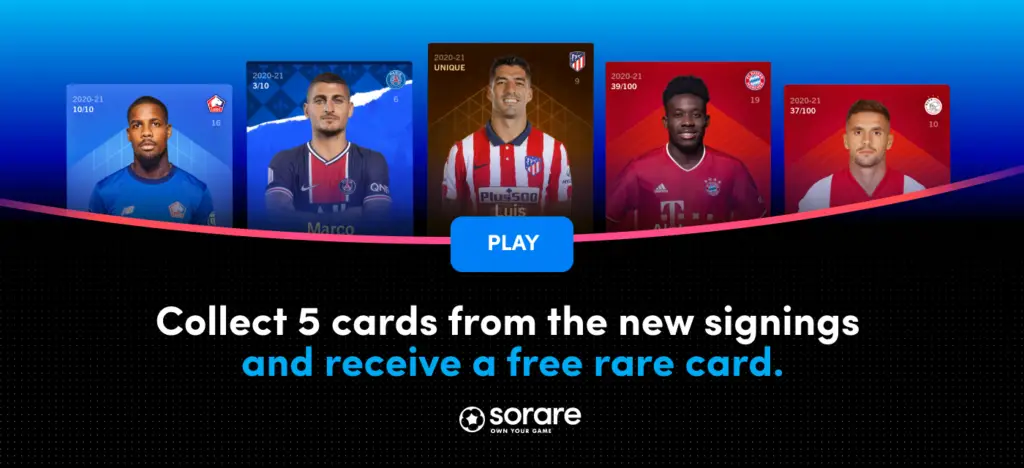Last updated on December 1st, 2022
You may have seen some goals being ruled offside where the player is in his own half when the ball is played.
However, the commentator mentioned that the player should not have been called offside!
So how does the offside rule really work when you are in your own half?
Contents
- 1 Can you be offside from your own half?
- 2 You have to be in an offside position to be called offside
- 3 The offside position is only considered when your teammate plays the ball
- 4 It does not matter even if you’re ahead of the ball and the second-last opponent
- 5 Pictorial explanation
- 6 #4 You are in the opponent’s half and are in front of both the second-last opponent and the ball
- 7 Real-life examples
- 8 Can you be offside from a ball that is played from your own half?
- 9 Conclusion
Can you be offside from your own half?
The offside law does not deem you as being in an offside position if you are in your own half or on the halfway line. Since you are not in an offside position, you would not have committed an offside offence in this scenario.
Here is this rule explained in detail:
You have to be in an offside position to be called offside
If you were to commit an offside offence, you will first have to be in an offside position.
Here is the official definition of ‘being in an offside position by the Laws of the Game:
- any part of the head, body or feet is in the opponents’ half (excluding the halfway line) and
- any part of the head, body or feet is nearer to the opponents’ goal line than both the ball and the second-last opponent
- The hands and arms of all players, including the goalkeepers, are not considered.
The very first criteria you have to meet is that you have to be in your opponent’s half. If you are in your own half or at the halfway line, you cannot be offside!
The offside position is only considered when your teammate plays the ball
In the second part of the offside rule, it states how an offside offence is committed:
A player in an offside position at the moment the ball is played or touched* by a team-mate is only penalised on becoming involved in active play
IFAB
The reference point is always when your teammate first plays the ball. This can either be a pass or shot.
When the referee is deciding if you are offside, he will look at your position when your teammate plays the ball.
If you are in your own half when your teammate plays the ball, you are not in an offside position.

As such, you will still be onside!
It does not matter even if you’re ahead of the ball and the second-last opponent
The second criterion of being in an offside position is that you have to be ahead of BOTH the ball and the second-last opponent.
Here are some things to note about this criteria:
- The last 2 opponents need not include the goalkeeper
- If you are past the second-last opponent but are behind the ball, you are still onside
However, the offside rule states that you have to fulfil both criteria to be in an offside position:
- Any body part that is in your opponent’s half
- Any body part being ahead of both the ball and the second-last opponent
The rules state that the only 2 body parts that are not considered in an offside call are your hands and arms.
You may be ahead of both your opponent and the ball. However, you are still in your own half. In this case, you are still considered to be onside!
Pictorial explanation
Still confused? Here are the 4 possible permutations that can occur:
#1 You are in your own half and behind the second-last opponent
For this scenario, you do not meet both criteria to be in an offside position:
- You are in your own half
- You are behind the second-last opponent
As such, you are in an onside position!
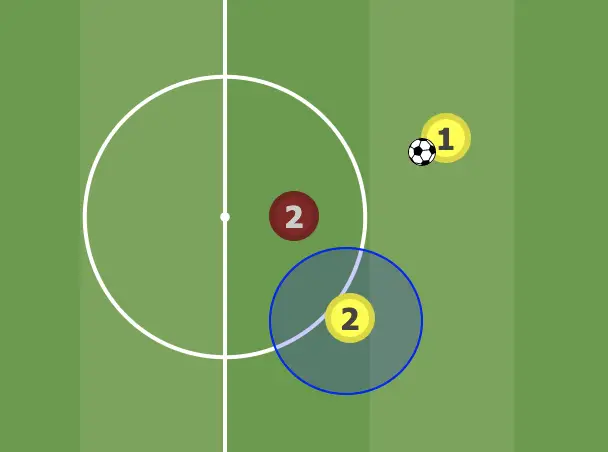
#2 You are in your own half but are in front of the second-last opponent
This scenario usually occurs in the dying moments of the game. Your opponents are losing the game and have thrown all the players forward.
However, your team is able to launch a counterattack. As such, your second-last opponent is caught out and is only near the halfway mark.
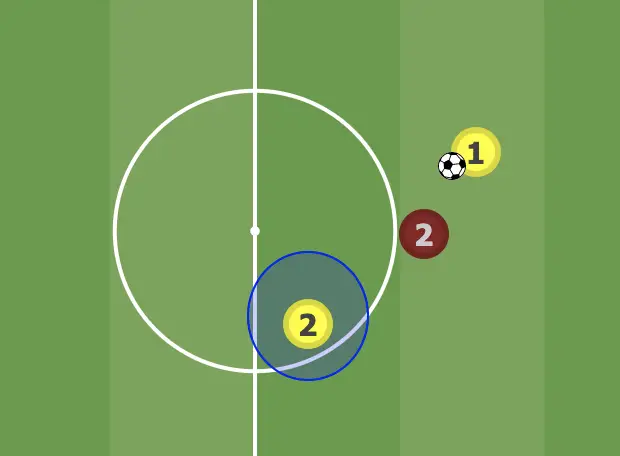
In this scenario, you only meet 1 criterion to be in the offside position:
- You are ahead of both the ball and the second-last opponent, but
- You are in your own half
To be in an offside position, you will have to meet both of the criteria. In this scenario, you are still considered as onside.
#3 You are past your own half but are behind the second-last opponent
In this scenario, you will also only meet one of the 2 criteria to be in an offside position:
- You are in the opponent’s half
- You are in front of the ball, but are behind the second-last opponent
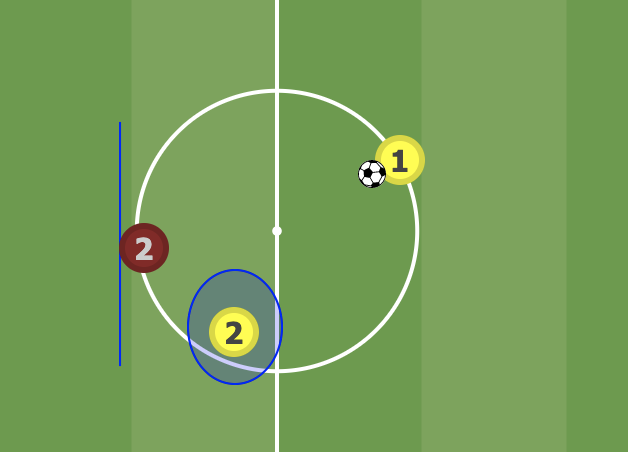
In this case, you are still in an onside position even if you crossed the pitch’s halfway mark!
#4 You are in the opponent’s half and are in front of both the second-last opponent and the ball
Only in this scenario, will you be called offside. This is because you meet both criteria to be in an offside position:
- You are in the opponent’s half
- You are ahead of both the ball and the second-last opponent
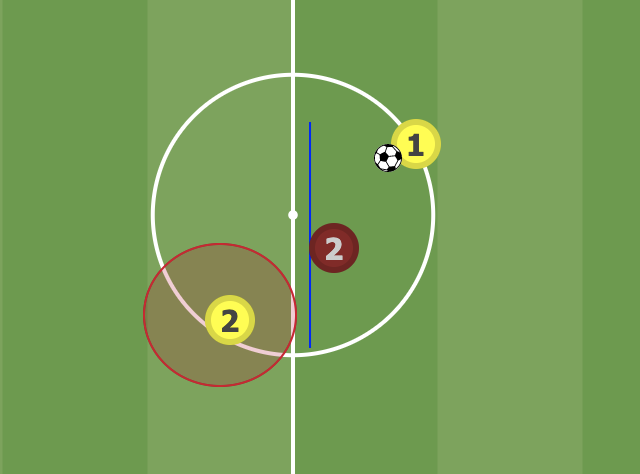
Once you are involved in the play, you will be called offside!
Real-life examples
Here are some real-life examples of this law being put into play.
#1 Liverpool vs Chelsea (2014/14)
In this match, Chelsea scored a quick counter-attacking goal.
You can see Willian passing the ball to Fernando Torres. Torres is in front of both the ball and the second-last opponent.
However, he was in his own half when Willian passed the ball!
This was why he was still in an onside position, and the goal stood.
If he had received the pass when he was after the halfway line, it would have been offside!
#2 Tottenham vs Sunderland (2014/15)
In this game, Tottenham was breaking on the counter from a Sunderland corner. Jan Vertonghen seemed to have scored after putting the ball into the open net.
However, the goal was ruled as offside!
This was the wrong call to be made by the referee.
Vertonghen was clearly in his own half when the ball was played. As such, he cannot be in an offside position in the first place!
This shows you that even referees can make mistakes sometimes!
#3 Liverpool vs Manchester United (2019/20)
In this match between Liverpool and Man Utd, Mohamed Salah scored the second goal from Alisson’s pass.
When Alisson first played the ball to Salah, Salah was still in his own half! Even though he was ahead of the second-last opponent, he was still in his own half.
As such, no offside was called and the goal stood!
Can you be offside from a ball that is played from your own half?
You will not be in an offside position if you are still in your own half when your teammate passes you the ball. However, if you are in your opponent’s half, and are in an offside position when the ball is being played from your own half, you will be committing an offside offence.
If you receive the ball that is played from your own half, it is not always guaranteed that you will not be called offside. You still will be called offside if you meet the following criteria:
- You are in the opponent’s half when the ball is being played
- You are in an offside position where you are ahead of both the ball and the second last opponent
If you are still in your own half, then you won’t be called offside!
As such, your position when the ball is played is more important compared to where the ball was being played from.
Conclusion
To be in an offside position, you have to meet 2 criteria:
- You are in the opponent’s half (in front of the halfway mark)
- You are closer to the goal-line compared to both the ball and the second-last opponent
As such, you cannot be in an offside position if you were in your own half when the ball was played!
You can find out more about why we need the offside rule here.
If you’re looking to buy the latest football merchandise from your favourite club, you can check out the latest deals at Kitbag.
Subscribe to Telegram and Twitter to get the latest updates!

Are you passionate about football and want to earn some side income?

